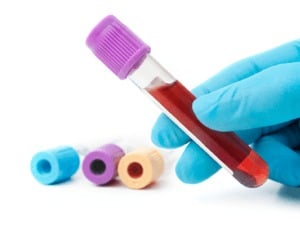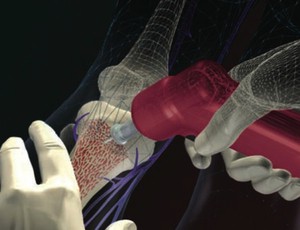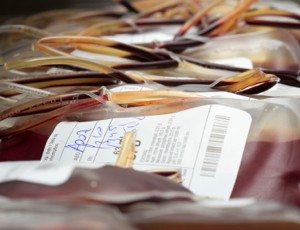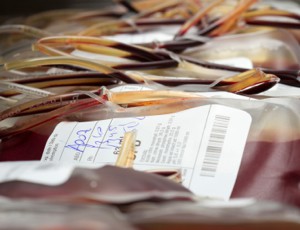Pediatric prehospital intraosseous access during combat operations

“Pediatric subjects receiving an IO had higher injury severity scores and higher mortality rates compared with those who received an IV only” Schauer et al (2021).
Intraosseous adenosine administration in a newborn infant – Full Text

“SVT is rare in the neonatal period and SVT is successfully terminated with the administration of intraosseous adenosine” Fidancı et al (2020).
Intraosseous adrenaline administration in cardiac arrest

“The adrenaline delivery method chiefly involved intraosseous infusion and intravenous access” Zhang et al (2020).
Point-of-care ultrasound for the management of febrile infants

“Point-of-care ultrasound has also been shown to facilitate obtaining IV access in infants as well as confirming the proper placement of intraosseous lines” Delacruz et al (2020).
IV or intraosseous access for out-of-hospital cardiac arrest

“Using IO when IV failed led to a higher rate of vascular access, prehospital adrenaline administration and faster adrenaline administration” Tan et al (2020).
International consensus on cardiopulmonary resuscitation – Full Text

“Systematic reviews addressed higher-priority topics, and included double-sequential defibrillation, intravenous versus intraosseous route for drug administration during cardiac arrest” Berg et al (2020).
Intraosseous vascular access during neonatal resuscitation – Full Text

“We aimed to analyze frequency of use, success, and complication rates of intraosseous (IO) vascular access in neonates at a single tertiary neonatal intensive care unit” Mileder et al (2020).
Tibial intraosseous access in the pediatric population

“Aim of this study was to analyze anatomic dimensions of the proximal tibia in the pediatric population with respect to intraosseous needle placement and needle tip position” Capobianco et al (2020).
Analytical equivalence of intraosseous and peripheral blood samples

“While IO devices are effective for infusion of blood, fluids, and medications, there is limited data on the analytical equivalence of specimens taken out of IO devices and peripheral venous blood” Song et al (2020).
When should intraosseous access be considered a first-line option?

“In cases in which there is an urgent need for medications and fluid resuscitation, whether in infants, children, or adults, and immediate intravenous access is not easily obtainable, intraosseous access should be considered as a first-line option” DeBoer et al (2020).
Iatrogenic humeral neck fracture after intraosseous vascular access

“It is important for radiologists to recognize the findings related to intraosseous access as well as this complication with its characteristic locations and morphology” Hopp et al (2020).
Pediatric tibial intraosseous Epinephrine administration

“We compared the efficacy of tibial intraosseous (TIO) administration of epinephrine in a pediatric normovolemic versus hypovolemic cardiac arrest model” Yauger et al (2020).
Intraosseous access result in secondary septic shock – Full Text

“Magnetic resonance imaging (MRI) created more confusion by showing septic arthritis with proximal humeral osteomyelitis and gas formation. MRI suggested that it might be the sequelae of an intraosseous line insertion” Khan et al (2020).
Intraosseous access in pediatric emergency care

“Intraosseous Access (IO) has obtained an increasingly valued place in emergency medical care cases when peripheral access venous access in not possible” Kikodze et al (2020).
Intravenous versus intraosseous administration of drugs during cardiac arrest

“To perform a systematic review of the literature on intravenous (IV) vs. intraosseous (IO) administration of drugs during cardiac arrest in order to inform an update of international guidelines” Granfeldt et al (2020).
Intraosseous versus peripheral IV access during out-of-hospital cardiac arrest

“To compare intraosseous access with peripheral venous access on adults out-of-hospital cardiac arrest (OHCA) patients’ clinical outcomes” Baert et al (2020).
Prehospital life-saving interventions performed on pediatric patients in a combat zone

“We aimed to describe and evaluate prehospital life-saving interventions performed in a pediatric population in the Afghanistan theater of operations” Reeves et al (2020).
Effects of humeral intraosseous epinephrine in a pediatric hypovolemic cardiac arrest porcine model

“Aims of the study were to determine the effects of humerus intraosseous (HIO) versus intravenous (IV) administration of epinephrine in a hypovolemic, pediatric pig model” Neill et al (2020).
Overview of intraosseous vascular access

“Intraosseous (IO) vascular access refers to the placement of a specialized hollow bore needle through the cortex of a bone, into the medullary space for infusion of medical therapy and laboratory tests” Dornhofer and Kellar (2020).
Blood transfusion via intravenous and intraosseous access

“There was therefore the need for feasibility testing of a model for contrasting the efficacy of blood infusion devices via intravenous (IV) and IO access” Bianchi et al (2020).
Intraosseous adrenaline for adult out-of-hospital cardiac arrest

“Intraosseous adrenaline for adult out-of-hospital cardiac arrest: Faster access with worse outcomes” Morgan et al (2020).
Intraosseous access in the resuscitation of trauma patients

“The objective of this review was to examine the evidence for intraosseous catheters in trauma resuscitation, and to highlight areas for future research” Tyler et al (2020).
Whole blood infusion via the IO route in traumatic hemorrhagic shock

“This is the first report of whole blood infusion via the IO route in traumatic hemorrhagic shock in the prehospital setting” Allon et al (2020).
IV versus intraosseous adrenaline administration in out-of-hospital cardiac arrest

“The 2018 Advanced Cardiac Life Support (ACLS) algorithm gives the option of either intravenous (IV) or intraosseous (IO) routes for adrenaline administration during cardiac arrest” Zhang et al (2020).
Intraosseous versus intravenous drug administration in patients with out-of-hospital cardiac arrest

“To compare the effectiveness of the intravenous (IV) and intraosseous (IO) routes for drug administration in adults with a cardiac arrest enrolled in the Pre-Hospital Assessment of the Role of Adrenaline” Nolan et al (2020).
Intraosseous access sites in rabbits

“The study goals were to determine if intraosseous (IO) catheters can be placed with greater success into the humerus, femur, or tibia of cadaver rabbits, and to evaluate the accuracy of perceived success (PS) and objective clinical success (OCS) criteria against true intramedullary catheterization confirmed by fluoroscopy” Kennedy et al (2020).
Intraosseous access in adults in cardiac arrest

“To evaluate the efficacy of intraosseous access versus venous access in out-of-hospital cardiac arrest in terms of return of spontaneous circulation (ROSC) and survival to hospital discharge with or without favorable neurologic status” Morales-Cané et al (2020).
TXA administration via IO and IM routes during hemorrhagic shock

TXA administration via IO and IM routes during hemorrhagic shock achieves serum concentrations necessary for inhibition of fibrinolysis and may be practical alternatives when IV access is not available” DeSoucy et al (2020).
Survival after intravenous versus intraosseous Amiodarone

Survival to hospital admission also increased significantly when drugs were given IV but not IO, and favored improved neurological outcome at discharge” Daya et al (2020). Abstract: Background: Antiarrhythmic drugs have not proven to significantly improve overall survival after out-of-hospital cardiac arrest (OHCA) from shock-refractory ventricular fibrillation/pulseless ventricular tachycardia (VF/VT). How this might be influenced […]
Propionibacterium acnes osteomyelitis after intraosseous cannulation

We report here an extremely rare incident of P. acnes tibial osteomyelitis at the IO access site” Cole et al (2019). Abstract: Propionibacterium acnes osteomyelitis secondary to intraosseous (IO) cannulation is not well documented in literature. We report here an extremely rare incident of P. acnes tibial osteomyelitis at the IO access site, in a […]

